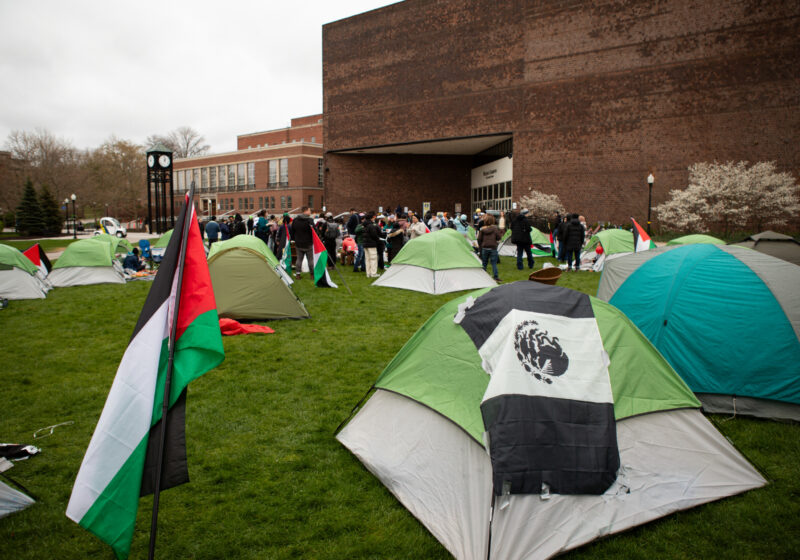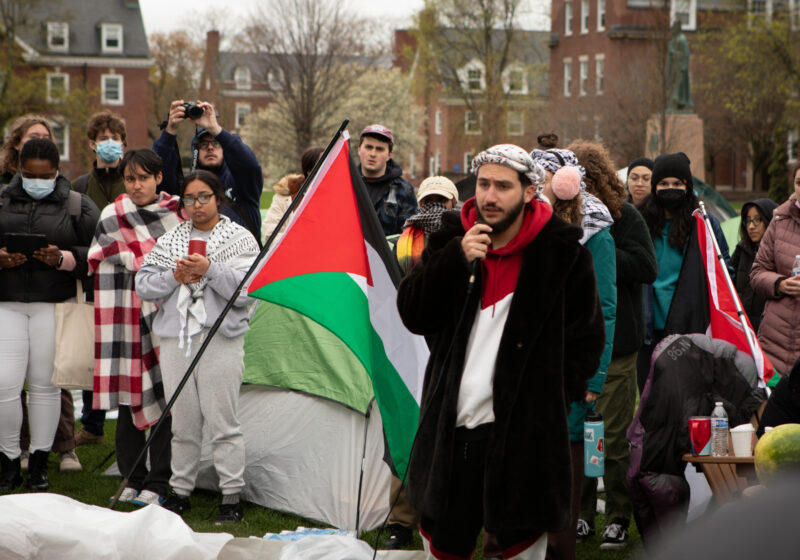The front page of Wednesday’s New York Times featured an image of the President of the United States, his arms around the leaders of the Palestinian and Israeli states, overseeing their handshake. Sound familiar?
The photograph was an exact replica of one taken in 1993 on the White House lawn in Washington D.C. The only difference is that this time it was Israeli Prime Minister Ehud Olmert and Palestinian President Mahmoud Abbas extending their arms with President Bush standing over them instead of Yitzhak Rabin and Yasser Arafat in the company of President Clinton.
The only variation between the two presidents’ policies is that it was Secretary of State Condoleezza Rice forcing the two leaders to meet in place of the president himself. Otherwise, the presidents are as identical in their approaches to the conflict as the pictures are to each other.
President Bush has claimed to be passive in facilitating Israeli-Palestinian peace, which, relatively, he has been. But now, as the president reverses his policy toward the Palestinian-Israeli conflict, he continues to claim passivity.
The president may not choose to travel to the Middle East himself, but that does not mean that the policies represented by his delegates are any less invasive than if he had come himself. Secretary Rice is the second most powerful representative of the United States in terms of foreign policy; I would venture to say that her views carry some weight, too.
The photograph was taken in Annapolis, Md., as opposed to D.C. Annapolis was the site for a peace conference for the Palestinian and Israeli leaders, entirely endorsed by the Bush Administration. The conference actually sparked huge opposition in the home-states. The Israeli Parliament, in preparation for the meeting, voted on legislation intended to limit Prime Minister Olmert’s authority at the conference. On the other side, President Abbas, who has barely any power as it is, was faced with over 100,000 protesters.
So far, the Annapolis Peace Conference has had two immediate effects. The first is that it caused the death of a Palestinian at one of the protests. The second is that it set a deadline – the end of 2008 – for a peace treaty between the two states. In the exceedingly unlikely scenario that this peace treaty were to form, it would fall right around the November elections and at the end of President Bush’s reign.
The Oslo Accords, or the reason for the picture 14 years ago, also set a deadline for a final settlement. That deadline was February 1999. Since then, we’ve seen the assassination of Rabin and the death of Arafat, the terror of the Second Intifada and the countless deaths involved, the costly – in political, monetary and human terms – pullout of Israeli settlers from the Gaza territory, the election of the terrorist group Hamas into the majority of the Palestinian Parliament and much more.
The Oslo Accords were created with pure intentions and popular leaders, and still they failed. These new negotiations come as both Olmert and Abbas have been seen to suffer from increased internal division among their respective peoples; President Bush, who is overseeing the project, is caught in numerous foreign policy conflicts across the world.
Two views of the conference have formulated. On one side, supporters of President Bush point out the positive steps taken in the negotiations and see this second handshake as a good portent for future relations between the Palestinians and Israelis. Critics denounce the conference as no more than a photo-op.
This Annapolis “Peace Conference” is no more than President Bush’s last attempt to leave the White House having accomplished something positive. If his motivation had been to further peace in the Middle East, he – and representatives like Secretary Rice – would have been concentrating on Iraq instead of forcing unwilling Arab leaders to attend the Annapolis meeting (the New York Times reported that the President had to personally call Saudi Arabia to get them to come).
It is clear from this meeting that President Bush has run out of places to extend America’s hand and has, like other presidents in the past, turned to the Middle East to try to save his presidency.
It’s not working. This is just another opportunity for the president to prove his inadequacy and show how ill fit he is to run this country as he makes mistakes that history has repeatedly warned against. The best stance the Bush Administration can take right now is to stop the meddling that has been so characteristic of American foreign policy in the 20th and 21st centuries. That way, the administration stands a chance of leaving the White House with a region intact and maybe even some positive poll numbers.
Epstein is a member of the class of 2010.


